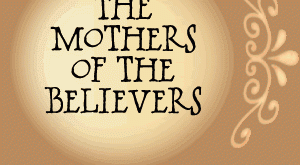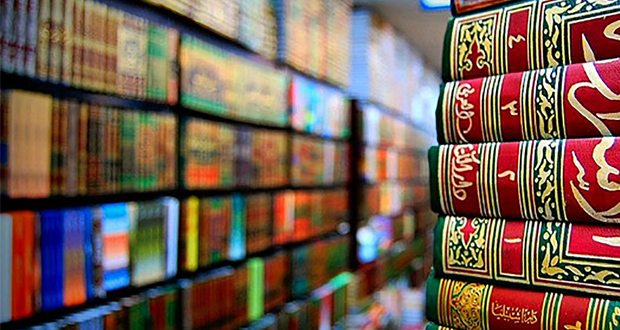Since the collapse of the Soviet Union in 1991, the Central Asian republics have seen a revival of Islam. The process kicked off quickly as Islam has always had deep roots in the region. Most Central Asians, when asked this question, give one answer: “Al-hamdulillah, I am.” The use of the Arabic phrase for “praise be to Allah” emphasizes the strength of their faith. The reply comes as no surprise because most of the peoples of Central Asia have historically been Muslims.
.jpg)
The region is profoundly Muslim while at the same time historically inclusive and tolerant. According to regional surveys, some 95 percent of the members of those historically Muslim populations consider themselves Muslim today.
I have no special knowledge of Islam, but Al-hamdulillah, I am a Muslim,” said one man in the Tajik capital, Dushanbe. “Islam teaches us to avoid bad behavior, to be honest, not to be drunk, and respect human beings, to have an open mind and a soft heart. If we do not follow these rules, we are not followers of Prophet Muhammad. (PBUH)
It was the drive to spread the message of Islam the Muslims entered Central Asia .The opening of Central Asia and the implementation of Islam was completed in the eighth century ADThis brought to the region a new belief and culture that until now continues to be dominant. The early Muslims were led by a brilliant general, Qutaybah ibn Muslim, and were highly motivated by the desire to spread the Islamic ideology.
The Arrival of Islam
The new way of life brought by the Muslims spread throughout the region. The native cultures were replaced in the ensuing centuries as Islam molded the people into a single community – the Islamic ummah. During the height of the Abbasid Caliphate in the eighth and the ninth centuries, Central Asia experienced a truly golden age.
Bukhara became one of the leading centers of learning, culture, and art in the Muslim world, its magnificence rivaling contemporaneous cultural centers such as Baghdad, Cairo, and Cordoba. Some of the greatest historians, scientists and geographers in the history of Islamic culture were natives of the region, and one of the copies of the Noble Quran originally prepared in the time of Caliph Uthman is kept in Tashkent. The new Islamic spiritual and political situation in Central Asia determined a new technological and cultural progress. It marked the production of the Samarkand paper which supplanted papyrus and parchment in the Islamic countries at the end of the 10th century.
Furthermore scientists such as al-Khorezmi, Beruni, Farabi, Abu Ali ibn Sino (Avicenna) brought fame to the area all over the world, generating respect across the world, and many scientific achievements of the epoch made a great impact on the European science (it is enough to mention the astronomical tables of Samarkand astronomers from Ulughbek’s observatory). During the comparatively peaceful era of Islamic rule, culture and arts flourished in Central Asia.
Soviet rule in Central Asia
The Communist authorities of the Soviet Union (1917-1991) inherited Central Asia from the old Tsarist Empire which collapsed during the First World War. The Communists viewed Islam with hostility and suspicion and tried to replace the regions Islamic identity and loyalty, with ethnically created republics.
Islam survived under the Soviet Union as the state after the Second World War sought to bring in certain aspects of Islam and tried to incorporate them within the state?s structure. This led to a Soviet ‘official Islam’, sanctioned and acceptable to the regime and an ‘underground Islam’ which sought to keep alive pre-Soviet ideas and practices.
Creating Central Asian Republics
Central Asia was one country known as Islamic Turkmenistan until the communist revolution. Under Soviet regime it was divided into five different administrative units such as Azerbaijan, Uzbekistan, Kazakhistan, Tajikistan and Kyrgyzstan. Stalin created Uzbekistan and Turkmenistan in 1924,
Tajikistan in 1929 and Kazakhstan and Kyrgyzstan in 1936. ‘The Soviets had clear political reasons, policy of divide and rule, for dividing ‘Turkistan’, into five new republics. Moscow did not desire the creation of an ‘Islamic Turkistan’ to be a singular republic within the Union of Soviet Socialist Republics (USSR).’
Kunya-Urgench was a major trade center on the Silk Road from the 10th-14th centuries, and the capital of Khorezm region. It was argued that – ‘Stalin drew the map of Soviet Central Asia for the purpose of reducing the prospects for regional unity. Five separate republics were formed, creating national units for ethnic communities that had yet to think of themselves as distinct nationalities. Moreover, boundaries were set to insure the presence of large irredentist populations in each republic.

When the Soviet Union collapsed in 1991, the Central Asian states had independence thrust upon them. They did not actively seek it. Furthermore, there no were strong nationalist movements in Central Asia seeking independence. None of the Central Asian states had a history of national existence prior to either the Soviet Union or that of the Tsarist Empire.
Hence, the primary source of loyalty of Central Asian peoples under the Soviet Union was not the Communist State. Rather, multiplicities of loyalties existed and continue to do so. These loyalties range from the clan, tribe, family, and republic and to Islam, with Islam having a powerful influence on social identity. Upon independence, Islam competed with peoples loyalties to the new states.
The resurgence of Islamic expression throughout the Soviet Union in the 1980s was the direct result of Gorbachev’s policies of Perestroika and Glasnost. Such policies relaxed the Soviet Union’s rigid authoritarianism and permitted a modicum of free expression to exist. This embryonic Islamic resurgence was felt in those areas that were traditionally deeply religious such as the Fergana Valley. For Uzbeks,
Tajiks and Kyrgyz this was an extremely important development. It showed their desire to break with the Soviet Communist ideology as well as Russian and Slavic culture and a desire to reassert their own cultural identity and belief systems. There was a great upsurge in the study of Islam and Arabic, with many Central Asian youth studying Islamic courses abroad.
However the people of Uzbekistan, Turkmenistan, Kazakhstan, Kyrgyzstan and Tajikistan have always lived under despots. Their history is so dismal that Communism for them was a time of relative prosperity. Now, 20 years after they became independent nations, they have once again become sultanates, ruled by tyrants who maintain tight control of political and economic activity.
The elite’s of Central Asia, by and large are Soviet legacies, as are the new states. Since independence Central Asia’s former Soviet elite?s have clung to power ruthlessly. All the Central Asian regimes have reverted to the policies that the Soviet Union adopted in dealing with Islam. Each regime has sponsored a particular version of Islam which the state approves of and is non-threatening to the status quo.
Source: Khurasaan.com
Post Disclaimer | Support Us
Support Us
The sailanmuslim.com web site entirely supported by individual donors and well wishers. If you regularly visit this site and wish to show your appreciation, or if you wish to see further development of sailanmuslim.com, please donate us
IMPORTANT : All content hosted on sailanmuslim.com is solely for non-commercial purposes and with the permission of original copyright holders. Any other use of the hosted content, such as for financial gain, requires express approval from the copyright owners.
 Sri lanka Muslims Web Portal Sri Lanka Muslims News Center
Sri lanka Muslims Web Portal Sri Lanka Muslims News Center



